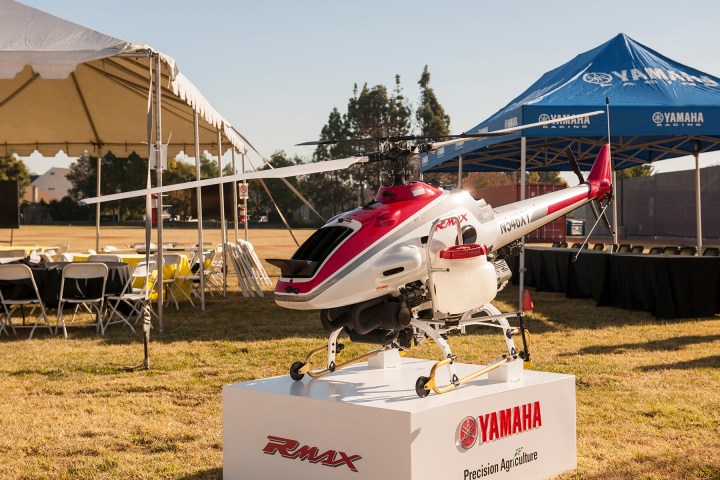
This certification is given to outfits that wish to use UAVs to dispense chemical fertilizers and treat soil or crops. Traditionally this task is performed by human pilots, who, according to the rules, must be trained on “safe handling of poisons, agricultural chemicals, and basic medical knowledge of the symptoms of poisoning,” and the unique challenges of flying at low altitudes.
Specifically, the certification is for drones produced by Yamaha Motor Corp., and it marks the first time a UAV has ever received Part-137 approval.
“We appreciate the FAA’s Part 137 Certification and we’re very excited to bring all the proven benefits and advantages of the RMAX to agricultural customers here in the U.S,” the company’s corporate planning chief Rob Trester said in a statement.
Yamaha has nearly 25 years of experience with drones in its home country of Japan, with its remote-controlled planes logging some two million hours of flight time so far. There, 2,600 RMAX drones are currently in use, and since their debut in 1997 have sprayed some 2.4 million acres annually.
Getting into the American market has proven much tougher, as regulators have resisted allowing the drones to fly here. But the battle is far from over; Yamaha must now also get approval from state and local regulators where its customers plan to operate these planes. That likely means it could be up to a year or more before RMAX drones start showing up in the airspace over your local corn field. The company is confident, however, that the first UAVs will be in use in time for the 2016 growing season.
Editors' Recommendations
- FAA gives UPS’ drone delivery efforts a big boost
- FAA authorizes autonomous drone flight without an operator nearby
- Flying meds: UPS uses drones for deliveries to CVS customers for first time
- Alphabet’s Wing drones now have FAA approval to deliver packages in the U.S.


